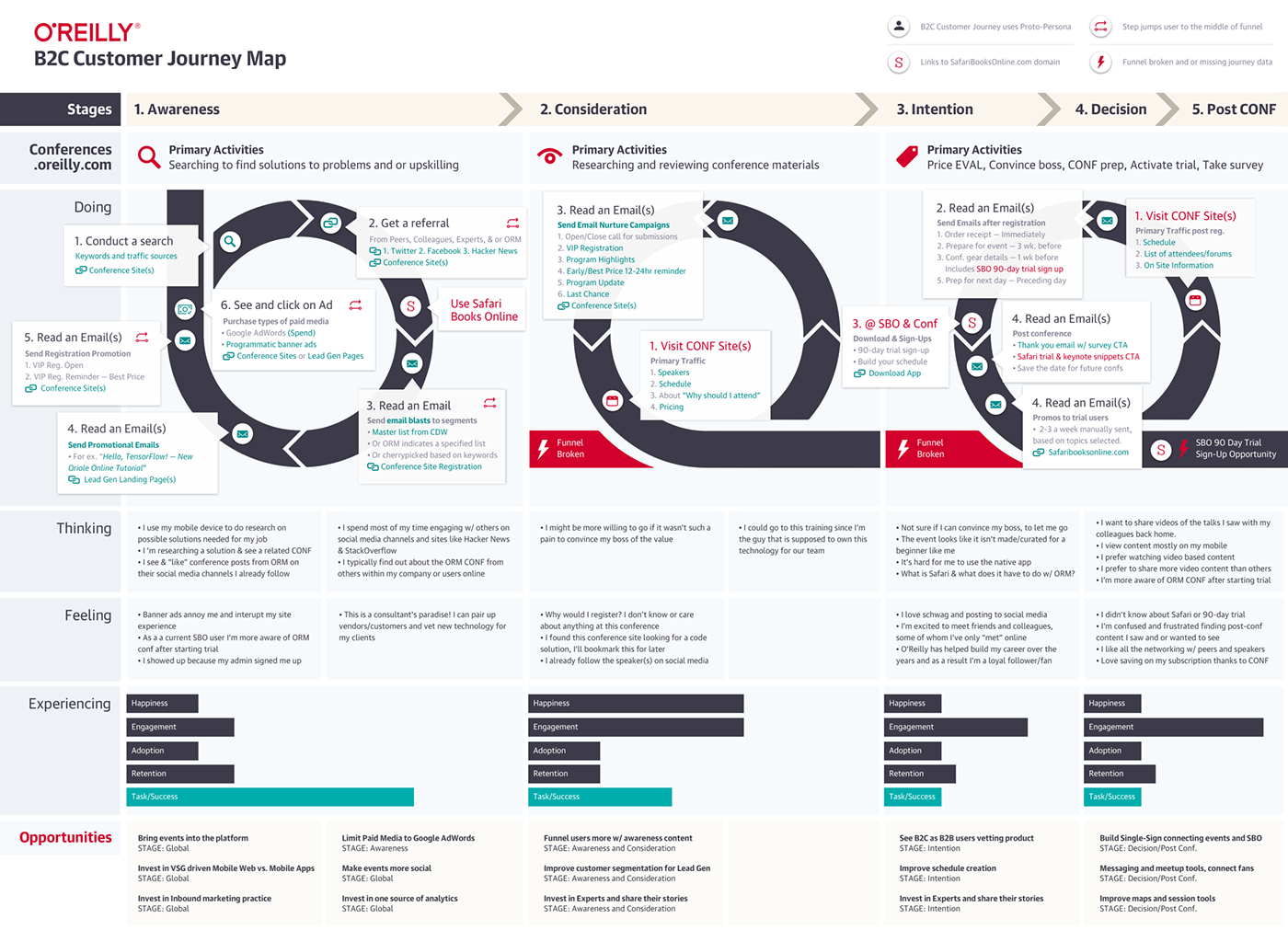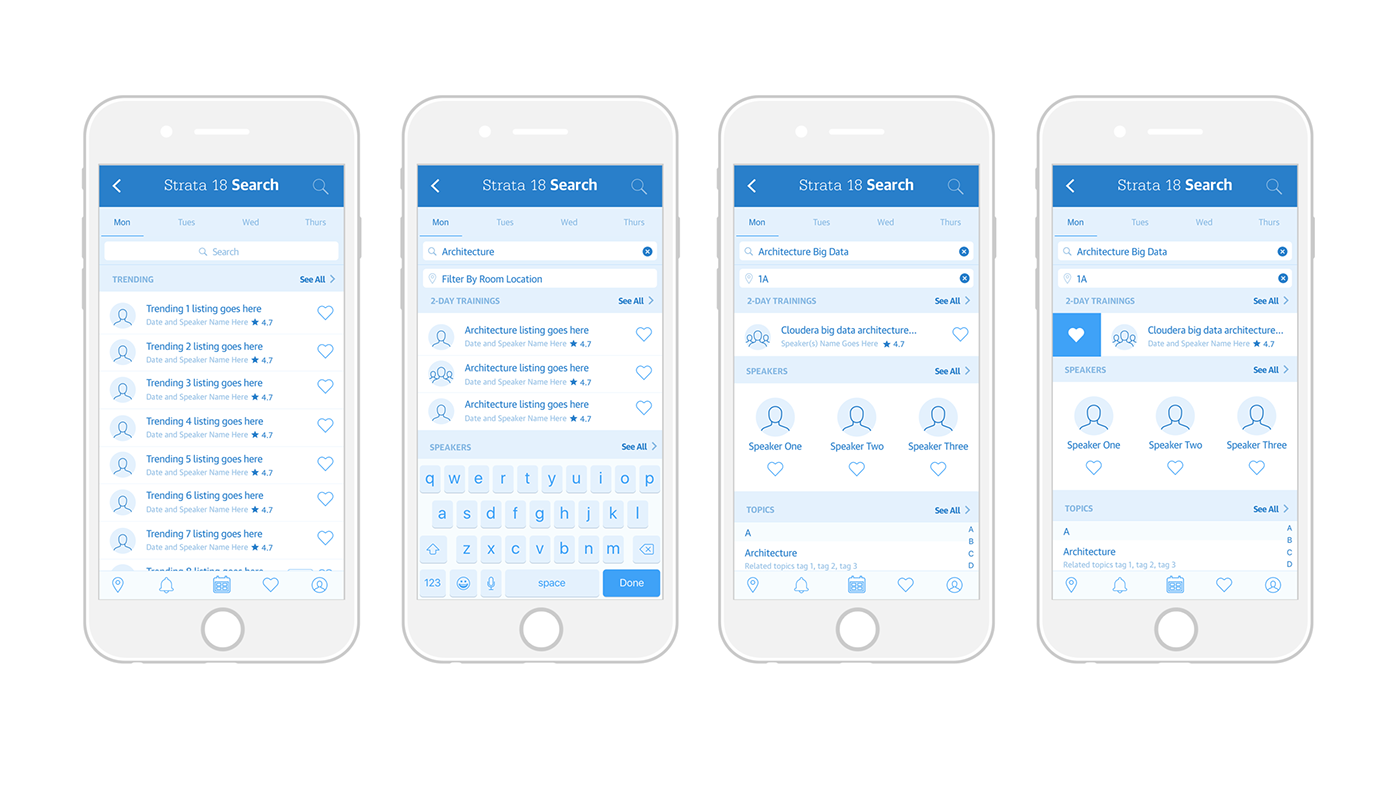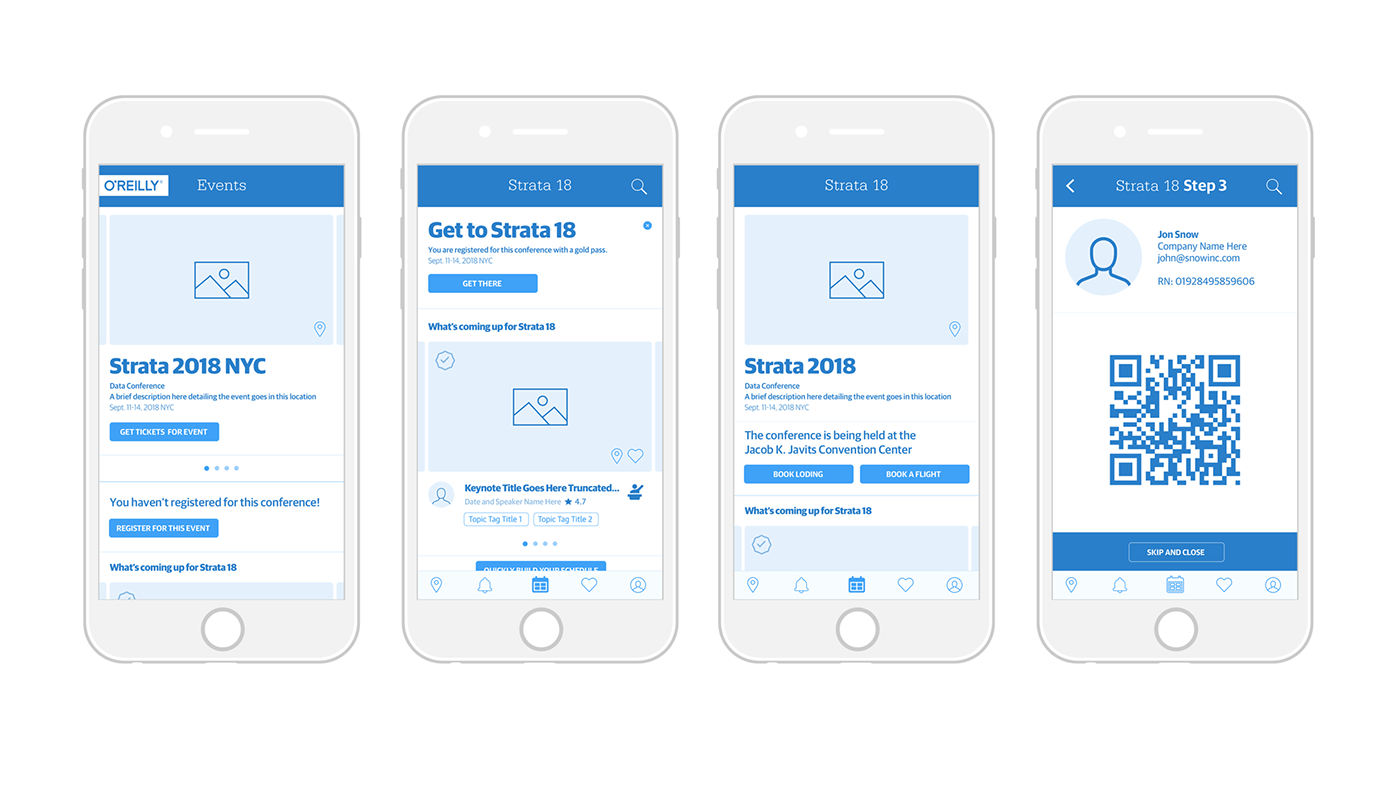O'Reilly Media, User Research Practice
The Product team aims to find answers to customer-centric questions. In Discovery we start by conducting insight-driven research to find answers to those questions. Is there fire? Is there even smoke? Once establishing those answers we can focus our design effort.
To accomplish this we mostly employ insight-drive qualitative research. We determine what the problem space is, why the problem exists, and where opportunities lie.
Role: Director of Product Design and UX

Discovery, Building Customer Empathy
One example at O’Reilly where we employed this kind of research was the 1:1 Contextual Inquiries we held on-site at our Strata Conference in NYC.
The purpose of our 1:1’s was to understand the anatomy of the average O’Reilly conference attendee, why were they there, what other events did they attend, who their communities are and what they’re looking to bring back from the experience into their everyday lives. We also sought to understand the perceptions of the actual attendee experience, and how is our programming augmenting what they’re already looking to do. Lastly, how might drive attendees to use our Safari learning platform?

Decide, Personas
After contextual inquiries, we begin to codify the user archetypes. These are formulated based on conversations with real people where we outline a customer archetype that contains perceived motivations, behaviors, beliefs, and goals. This is the foundation from which we map the "customer journey" and pain points within.


Decide, Customer Journey
Furthering the research done at Strata NY we wanted to understand conversion events more. Specifically around conversion to trial for both the online and attendee experience. Therefore we developed a customer journey map, using our personas. The purpose of our customer journey map was to identify gaps, weaknesses, and redundancies in the trial-to-subscription conversion customer journey across B2C touch points. Doing so infused our hypotheses/MVPs we created to drive an uplift in key conversion KPIs.

Design Sprints
Synthesizing the Customer Journey
At the end of the customer journey we’re able to address definable gaps and weaknesses in the journey which could help solve customer problems. These turn into opportunities articulated as a singular “problem statement” for specific personas which we organize assumptions and ultimately a hypothesis around. We prioritize these hypotheses based on what’s the riskiest and or what has the most potential for success. These are coupled with clear KPIs. All of which acts as a rudder for our design sprints.
In the case of our customer journey map for the conferences.oreilly.com domain we keyed in on the following problem statement.
Problem Statement
“We have observed that the O’Reilly mobile events experience isn’t meeting the needs of attendees, which is causing them to miss out on scheduled sessions (during and post) to operationalize learning as well as make connections with fellow attendees and or experts.”
Prioritized hypothesis
And organized around the first hypotheses “We believe that improving core usability of the events app; schedules, sessions, and their resulting takeaways for our proto-persona will result in attendees to to fully experience a given event pre, during and after. We’ll know we’re right when we see an increased System Usability Score (SUS); positive reviews on Event survey feedback.”
Running the Sprint
Remote and cross-functional teams coming together
Our Design Sprint helps us visually articulate how our product features and ideas will look and behave. This is a collaborative sketching exercise, made for cross-functional teams like ours. It builds on the broad hypotheses, uncovers solutions for it and uncovers our identifies our first MVP target to test.

At the end of our sprint we’ve collected, in this case using mural.ly, a "whiteboard" that captures individual ideas and sketches/drawings refined through discussion and voting. In this case it resulted in click-thru wire-framed prototype for the events app which could be stood up and tested.







